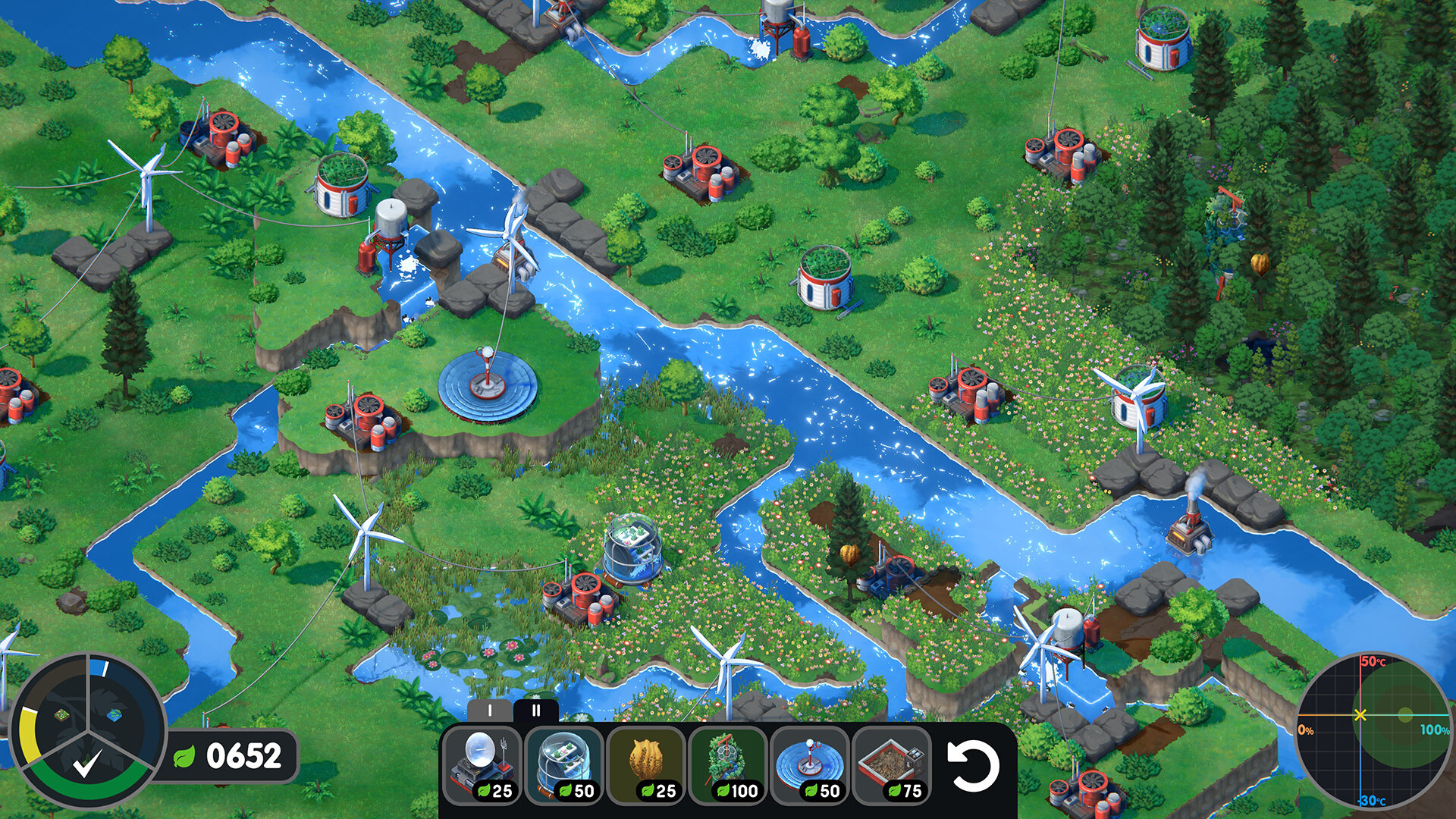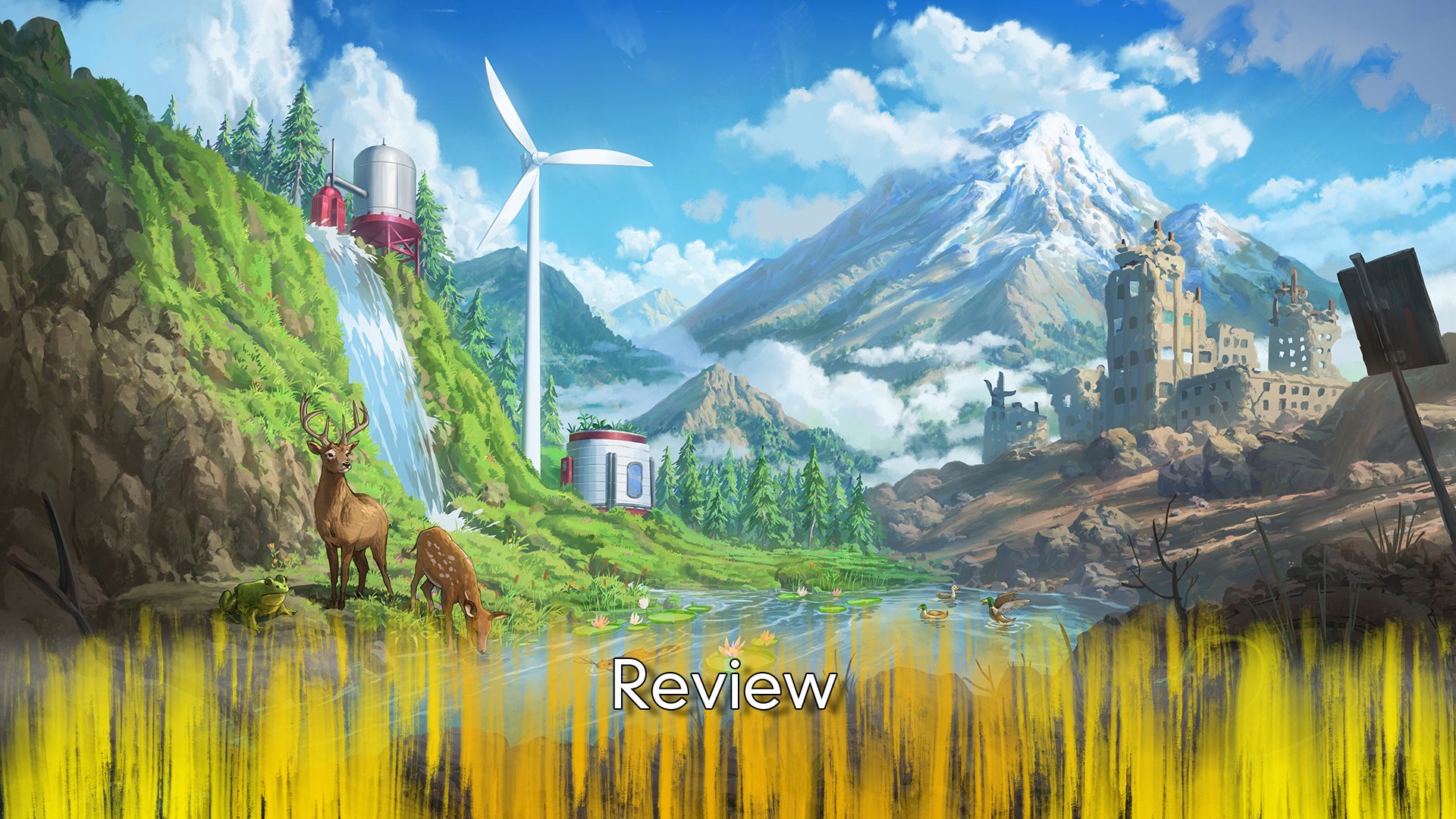Hands on with Terra Nil

From the moment that I saw the trailer for Terra Nil, I knew it was a game that I would have to play, mixing puzzles and resource management, with a slow pace that just seemed perfect, compared to most other games of the moment. But having spent some time with the game, the question remains, is everything coming together, or does it all add up to nil?
The goal of Terra Nil is simple, revitalise a world that has been left barren, they why of how the situation came to be, but the how it will be fixed is up to you. The game generates a new location each time you start into a game, and with the many attempts I had at it, the maps were sometimes easy and sometimes a real challenge. The mechanics are simple, in order to grow anything green, you need to remove toxins from the soil and for the machines to do that, you need power, see simple. But where things start to become complex is with regards to the location of where you can put the wind turbines, as they require a solid base, meaning on top of rocks only and while sometimes you can luck out and get a few great options, other times they might be a little less than ideal.
The catch is that once your power is down, it is down for good, there is no moving of them, so you need to be sure of where you are going to put other things down the line. Speaking of lines, each item that you place down has a need for power, meaning you can’t just drop toxin scrubbers anywhere you want, and this is where some hard decisions start to be required. Early on in my attempts to save the world, I was not paying enough attention as to where I was placing those scrubbers, which in turn impacts my ability to grow things down the line and because you can’t delete anything you build, at least until much later, it can really slow your progress down, whilst you attempt to find a workable solution.
The catch with all that though, is that once you have generated enough green grass, the basics for your expansion, you then need to consider building unique biomes, so life can find a way. These biomes have their own requirements on how they can be built, for example the swamplands need access to water, so you can’t build them away from a river, but sometimes river locations but up against ground that is higher than it, which means you can’t convert. There are quite a number of things that you need to learn and while the game does explain things to you, it is only in the most basic of concepts, the extra restrictions you have to work out for yourself.
The final goal, at least in the demo build, is to remove all traces that you were even there, because the planet, or at least this little slice of it, should be able to regulate itself, without the input of humankind. If you barely made it past phase 2, this will test your skills like nothing before, because you will have forest, swampland and more to now contend with. I was able to achieve this goal, but it took me a few times, how it will play out in the full game is something I am keen to see.
Perhaps that is the big question, how will a game about revitalising the world go in much longer sessions, would the map be bigger, or would it be more akin to multiple zones and the end goal is getting them all sorted? I can happily say that I don’t know, and I am very glad for this, because this was an oasis in the middle of E3 madness, it offered up some calming gameplay each time I loaded in. The balance of deploying tools to help you grow, against using as few as possible is a challenge, but one that I am eager to take on in full.








